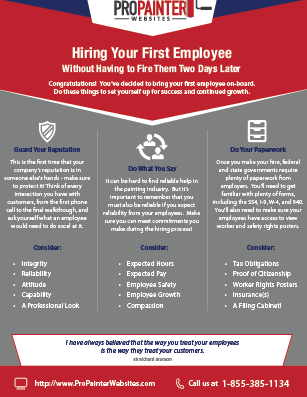Examine The Function Of Seasonal Factors In The Success Of Business Outside Paint And Uncover The Best Times To Safeguard Lasting Results For Your Job
Examine The Function Of Seasonal Factors In The Success Of Business Outside Paint And Uncover The Best Times To Safeguard Lasting Results For Your Job
Blog Article
Material Writer-Aguilar Celik
When you're preparing a commercial outside painting project, seasonal elements can make or damage your results. You'll intend to take into consideration how temperature level and humidity impact paint application and drying out times. Choosing the appropriate season can ensure your paint sticks properly and lasts longer. Yet which periods are really the best for this type of job? Let's explore the key elements that can influence your job's success.
The Effect of Temperature Level on Paint Application
When you're intending an industrial exterior paint job, the temperature level can considerably influence how well the paint sticks and dries out.
Ideally, interior house painting twin cities intend to repaint when temperature levels vary between 50 ° F and 85 ° F. If it's too cold, the paint might not treat appropriately, causing concerns like peeling off or breaking.
On the other side, if it's too warm, the paint can dry out also quickly, stopping proper adhesion and causing an irregular coating.
You need to also consider the time of day; morning or late afternoon supplies cooler temperatures, which can be more beneficial.
Always inspect the supplier's referrals for the particular paint you're making use of, as they frequently supply assistance on the ideal temperature level array for optimal outcomes.
Moisture and Its Impact on Drying Times
Temperature isn't the only ecological factor that affects your business exterior paint project; moisture plays a considerable role too. High humidity degrees can decrease drying out times drastically, affecting the total high quality of your paint job.
When the air is filled with dampness, the paint takes longer to cure, which can cause concerns like poor bond and a greater danger of mildew growth. If https://stephennvdoh.elbloglibre.com/34300306/explore-the-latest-methods-and-styles-in-house-painting-and-be-inspired-by-creative-strategies-to-enhance-your-living-space on a particularly humid day, be prepared for extensive delay times between coats.
It's important to monitor local weather conditions and plan accordingly. Ideally, aim for humidity degrees between 40% and 70% for ideal drying out.
Keeping these factors in mind guarantees your job remains on track and provides an enduring finish.
Best Seasons for Commercial Exterior Paint Projects
What's the very best season for your business exterior painting projects?
Springtime and very early autumn are usually your best bets. During these seasons, temperatures are moderate, and humidity degrees are frequently reduced, producing ideal conditions for paint application and drying out.
Prevent summer's intense heat, which can trigger paint to completely dry as well swiftly, leading to inadequate attachment and finish. Likewise, winter months's cold temperature levels can hinder appropriate drying out and treating, running the risk of the long life of your paint task.
Aim for days with temperature levels in between 50 ° F and 85 ° F for optimum outcomes. Keep in mind to examine the neighborhood weather prediction for rain, as damp conditions can destroy your project.
barn roof painters around these factors ensures your paint project runs efficiently and lasts longer.
Final thought
In conclusion, preparing your industrial outside painting jobs around seasonal considerations can make a considerable difference in the end result. By organizing work during the perfect temperature levels and humidity levels, you'll guarantee much better bond and drying out times. Keep in mind to keep an eye on neighborhood weather forecasts and choose the correct time of year-- spring and very early fall are your best bets. Taking these steps will help you attain a resilient and specialist surface that lasts.
